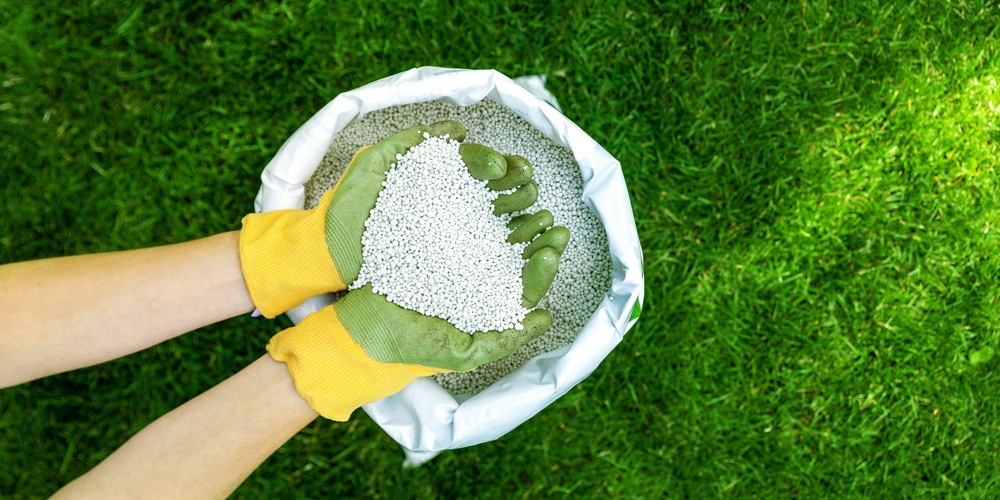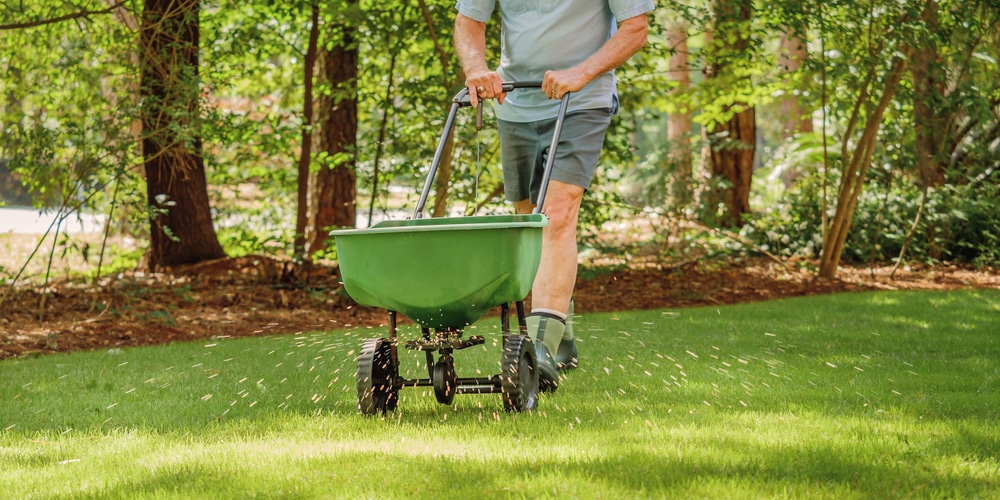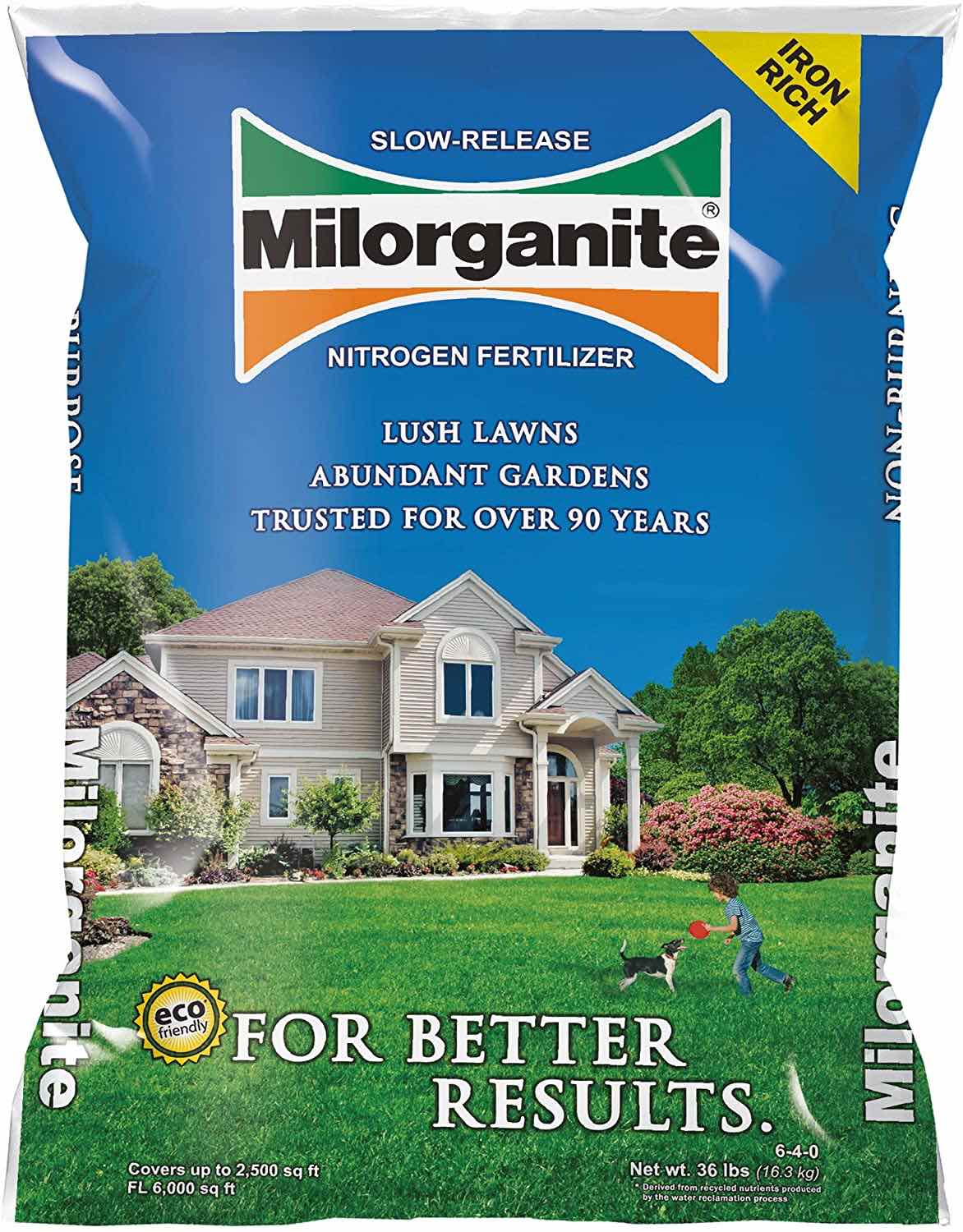The right fertilizer can mean the difference between a healthy, green lawn and one that’s patchy and full of weeds. Two brands that are popular among homeowners are PGF Complete vs Milorganite.
These products are designed to provide your grass with the nitrogen, phosphorus, and potassium needed to grow strong and healthy. However, which one is better and most suited for your lawn?
To help you make a decision, we’ve put together a comparison of PGF Complete vs Milorganite. We’ll look at what each fertilizer contains, how they work, and which is best suited for different types of lawns.
PGF Complete vs Milorganite: What’s in Each Fertilizer?

Both PGF Complete and Milorganite contain nitrogen, phosphorus, and potassium. However, the ratios of these nutrients vary between the two products.
PGF Complete has a higher nitrogen concentration and a proportion of 16-4-8. In comparison, Milorganite has a 6-4-0 ratio. The percentage of nitrogen to phosphorus in Milorganite is also different than the ratio found in most other fertilizers on the market.
How Do They Work?
These two fertilizers are applied the same way you’d do with any other fertilizer. Apply in the lawn, water afterward, and mow as needed. The fertilizer will then work its way into the soil, where the grassroots will take it up.
The main difference in how these products work is in the nutrient release. Milorganite is an organic fertilizer that contains iron and sulfur. It breaks down slowly over time, releasing nitrogen and other nutrients into the soil as it does. This makes it ideal for use on established lawns since it won’t cause any burning or other damage if over-applied.
PGF Complete, on the other hand, is a fast-acting fertilizer. This means it will start working immediately after application and will continue to work for up to six weeks. It’s best used on new lawns or ones that need a quick green-up.
Milorganite
Considered a slow-release fertilizer, this particular type strengthens the plant (or grass) from the inside by promoting a better rooting system. Stronger roots mean a healthier plant that can effectively ward off diseases and pests. This fertilizer contains iron, which is good for the grass as it gives it a deep green color.
PGF Complete
The right soil environment is crucial in keeping your lawn thick and green. It needs to be able to hold in moisture and nutrients. This way, your grass can get the most out of every drop of water and drain well.
That’s why PGF Complete is such a great product. It conditions the soil and keeps the nutrients in, so your grass can stay healthy and strong, even during times of drought. It’s like giving your lawn a little boost from the roots up.
Which is Best Suited for Your Needs?
The type of fertilizer you should use will depend on the kind of lawn you have.
Gardeners in colder climates have several grass options for their lawns. The two main types are cool-season grasses and warm-season grasses.
Cool-Season Lawn
Milorganite is a better-suited option for a cool-season lawn. This is because it contains less nitrogen. Too much nitrogen in a cool-season lawn can cause the grass to grow too quickly. This results in weak, spindly blades that are more susceptible to disease and pests.
Kentucky bluegrass, annual ryegrass, and tall fescue grasses are all examples of cool-season grasses. As a slow-release, it will provide a steady supply of nutrients throughout the growing season.
Warm-Season Lawn
If you have a warm-season lawn, then you should use PGF Complete. This fertilizer is also designed to release its nutrients slowly, but the release is faster than Milorganite. The quicker release is necessary because warm-season grasses grow faster than cool-season grasses.
Additionally, PGF Complete is an excellent choice for warm-season lawns because it will give the grass the nutrients it needs to grow quickly. When your turf and lawn grasses grow quickly, they can crowd out weeds, giving you a healthier, better-looking lawn.
While PGF is also a slow-release fertilizer, it disperses faster than Molorganite. The fast release of nutrients will give your lawn a quick energy boost, especially during its growing season.
PGF Complete vs Milorganite: Final Thoughts
Considering your lawn type or grass type is the first and the most important factor to take into account when choosing between these two types of fertilizer. A cool-season lawn will do better with Milorganite, while a warm-season lawn will prefer PGF Complete.
Once you’ve considered the type of grass you have, then you can look at the other factors, such as price and application method. Overall, both fertilizers are good choices and will give you a healthy lawn. It just depends on your specific lawn needs.


